10 Stunning Side of House Landscaping Ideas to Enhance Your Home’s Curb Appeal
1. Create a Vertical Garden
Transform your narrow side yard by going vertical. Install wall-mounted planters, trellises, or pocket gardens to maximize limited space. Plants like ferns, succulents, and climbing vines work beautifully in vertical arrangements while taking up minimal ground space. This approach adds lush greenery without cluttering the pathway and creates visual interest along otherwise plain exterior walls.
2. Install a Stone Pathway
A well-designed stone pathway adds instant charm to your side yard. Choose materials like flagstone, pavers, or gravel that complement your home’s exterior. Create visual interest by using irregular-shaped stones or adding ground cover plants between stepping stones. This functional addition prevents mud tracking while guiding visitors through the space with elegance.
3. Incorporate a Rain Garden
Turn your side yard into an eco-friendly solution by creating a rain garden. Design a slight depression filled with water-loving native plants and decorative rocks to collect runoff from your roof and driveway. This smart landscaping prevents erosion, reduces water waste, and creates a beautiful natural feature that changes with the seasons.
4. Add Industry Lighting
Illuminate your side yard with strategically placed lighting to enhance safety and ambiance. Solar path lights, downlights mounted on the house, or string lights overhead create a welcoming atmosphere after dark. Highlight special features like ornamental trees or architectural elements to add dimension and make the space usable even in the evening hours.
5. Plant a Narrow Privacy Screen
Create separation and privacy with slim-profile plantings. Columnar trees like Italian cypress or arborvitae require minimal width while providing maximum vertical screening. For quicker coverage, consider bamboo or tall ornamental grasses that thrive in tight spaces. This living barrier offers privacy without sacrificing valuable square footage.
6. Design a Container Garden
Arrange a collection of containers in varying heights and sizes to add color and texture to your side yard. Choose pots that complement your home’s color scheme and fill them with seasonal flowers, herbs, or dwarf shrubs. This flexible approach allows you to change your display throughout the year and works perfectly in areas with poor soil or limited planting space.
7. Install a Small Water Feature
Add tranquility to your side yard with a compact water feature. Wall-mounted fountains, narrow bubbling rock columns, or slim pondless waterfalls create soothing sounds while taking up minimal space. These features mask street noise and create a peaceful transition between your front and back yard.
8. Create a Woodland Garden Path
Transform your side yard into a shaded retreat with woodland-inspired plantings. Use hostas, ferns, and other shade-loving perennials beneath existing trees or along a north-facing wall. Add mulched pathways with stepping stones and small accent lights to create a magical forest-like passage that stays cool during summer months.
9. Build Raised Garden Beds
Maximize growing space with narrow raised beds along your side yard. These elevated planters provide perfect growing conditions for vegetables, herbs, or cut flowers while clearly defining the space. Choose materials that match your home’s exterior like cedar, stone, or composite boards for a cohesive look that boosts curb appeal.
10. Add Architectural Elements
Incorporate structural features that complement your home’s style. A decorative gate, arbor, or trellis creates a defined entrance to your side yard while adding vertical interest. Consider adding outdoor art, a small seating area, or decorative screens that reflect your personal style. These thoughtful touches transform a utilitarian passage into a designed industry that enhances your entire property.
Creating a Functional Pathway Along Your Side Yard

A well-designed pathway can transform your side yard from a neglected passage into a purposeful and attractive space. Functional pathways not only provide safe access to your backyard but also create visual interest and enhance your property’s overall appeal.
Materials to Consider for Side Yard Pathways
When selecting materials for your side yard pathway, durability and aesthetics should be your top priorities. Natural stone pavers offer timeless elegance and exceptional longevity, withstanding harsh weather conditions for decades. Brick pavers provide a classic, warm look that complements traditional home styles while being relatively easy to install. Concrete pavers come in various shapes, colors, and textures, making them versatile for any design style. For budget-friendly options, consider gravel or decomposed granite paths that provide excellent drainage and a pleasing crunch underfoot. Wood chips or bark create a natural woodland feel but require regular replenishment. Stepping stones can be arranged in creative patterns, leaving space for ground cover plants between them for a softer, more integrated look. Always consider your climate, maintenance preferences, and how the pathway material will complement your home’s architecture.
Lighting Options for Safe Navigation
Strategic lighting along your side yard pathway ensures safe navigation while adding charm and security to your outdoor space. Solar-powered path lights offer an eco-friendly, cost-effective solution that’s simple to install without wiring. LED strip lights can be mounted under handrails or steps for subtle illumination that guides movement. Motion-sensor fixtures provide hands-free convenience and enhanced security, activating only when needed. Consider bollard lights for a contemporary look that casts downward light without glare, or wall-mounted sconces if your pathway runs alongside your home. For a magical atmosphere, string lights suspended overhead create a canopy of soft illumination. Recessed path lights provide a sleek, unobtrusive option that won’t interfere with mowing or snow removal. When planning your lighting, focus on illuminating changes in elevation, entry points, and any potential hazards to ensure safe passage through your side yard after dark.
Installing Vertical Gardens for Narrow Side Spaces
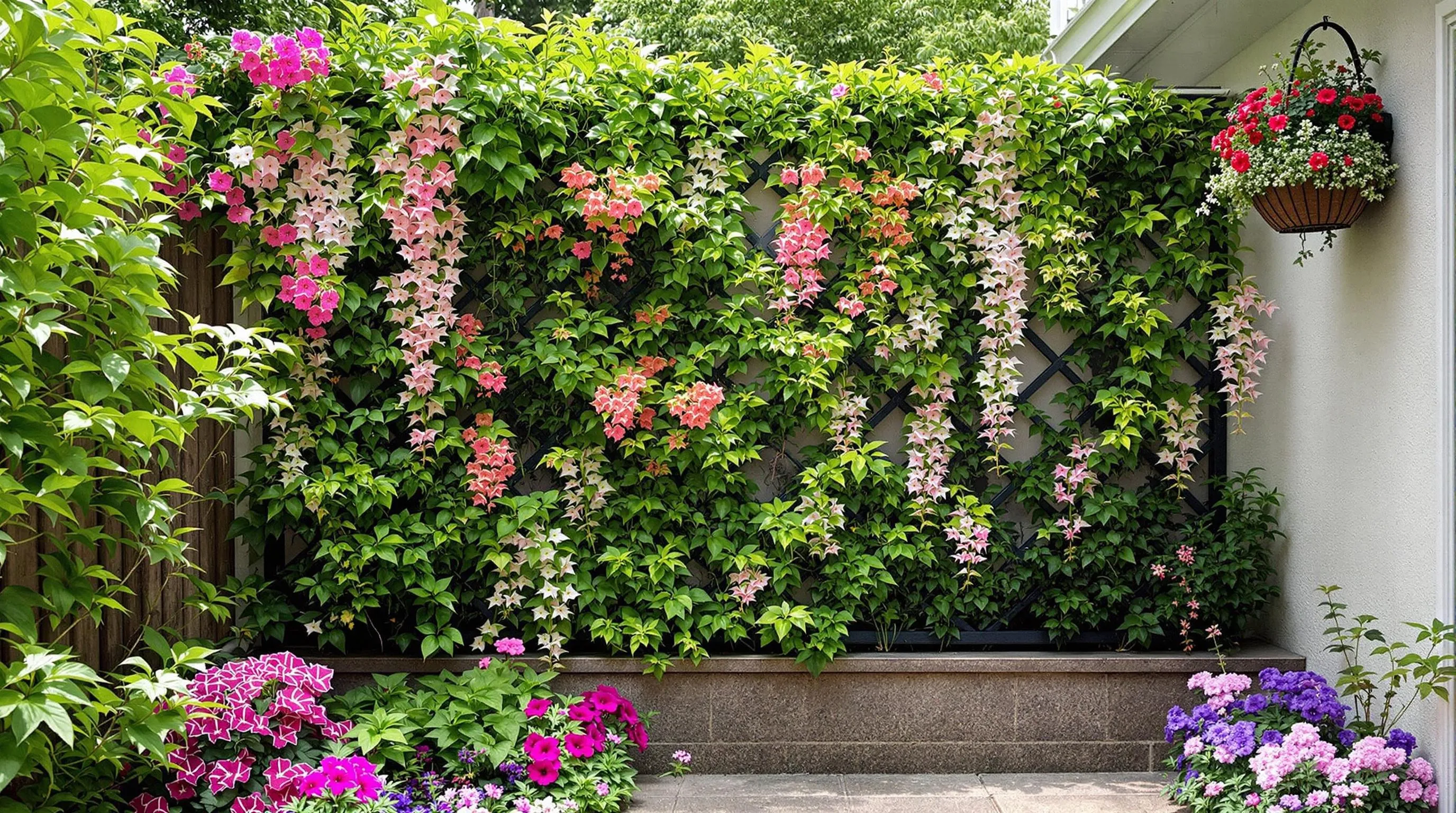
Transform your cramped side yard into a lush living wall with vertical gardens. These space-maximizing answers allow you to grow upward instead of outward, making them perfect for narrow spaces where traditional landscaping isn’t possible.
Space-Saving Trellis Designs
Opt for wall-mounted trellis panels that take up minimal ground space while providing ample growing area. Diamond-pattern trellises offer excellent support for climbing plants and add visual interest even before greenery fills in. Consider expandable willow trellises that can be adjusted to fit your exact space requirements. Metal grid panels mounted directly to your home’s exterior create an industrial-chic look while supporting vigorous climbers. For a more architectural approach, try installing a series of horizontal wires anchored between posts to create a modern, minimalist support system that disappears behind your plants as they grow.
Best Plants for Vertical Side Yard Gardens
Select plants that naturally grow upward or cascade downward for optimal vertical garden performance. Climbing roses, clematis, and jasmine offer beautiful blooms and delightful fragrance while covering important vertical space. Edible options like cucumbers, peas, and pole beans transform your side yard into a productive kitchen garden. For year-round interest, choose evergreen climbers like ivy or creeping fig. In shadier side yards, ferns and hostas thrive in wall-mounted planters, while succulents work beautifully in sunny, dry conditions. Trailing plants such as pothos, string of pearls, and wave petunias create dramatic cascading effects when planted in elevated containers or pocket planters attached to your vertical structure.
Transforming Side Yards with Water Features
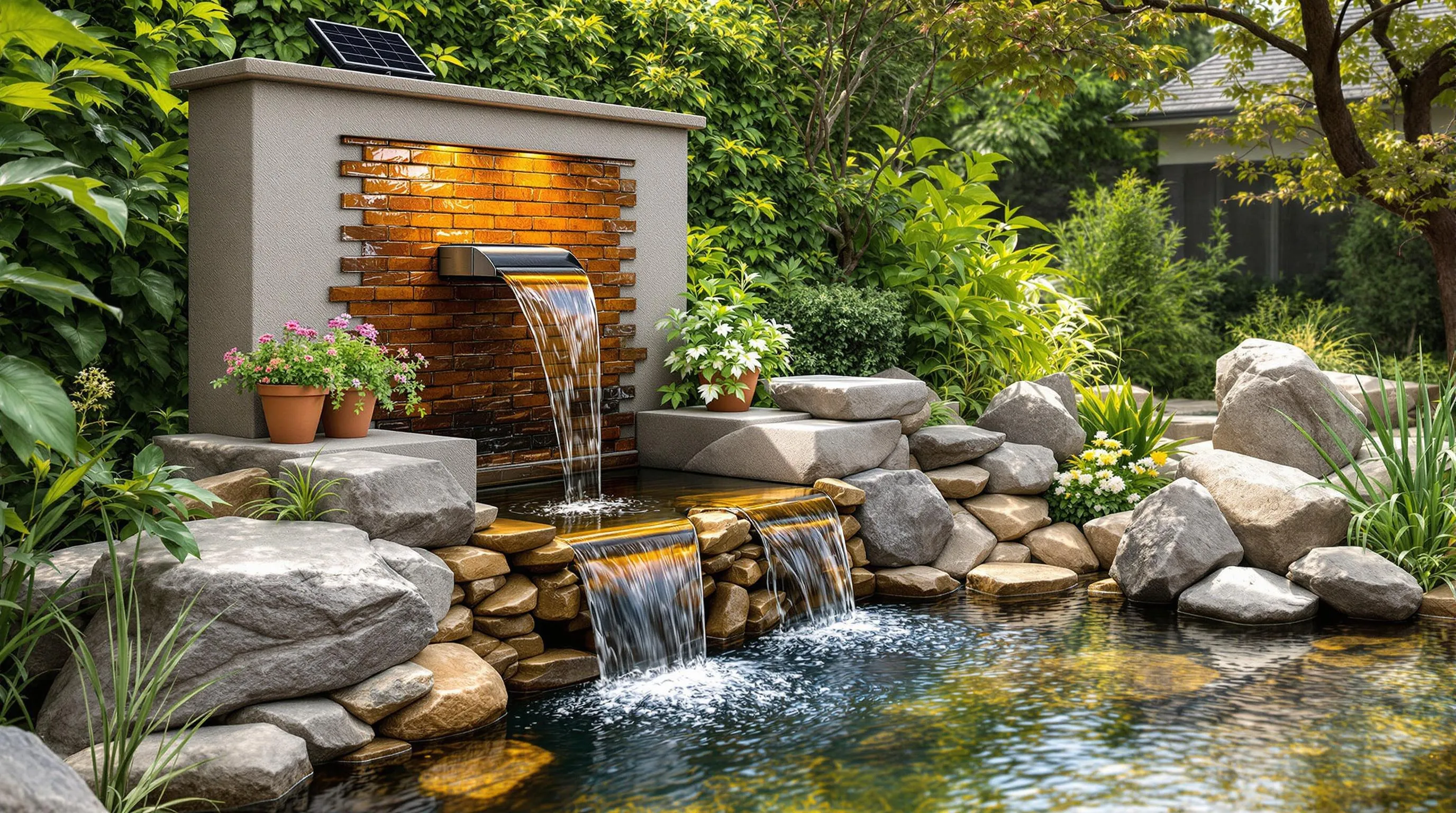
Water features can transform even the narrowest side yard into a tranquil retreat that engages multiple senses. The sound of flowing water masks street noise while creating a peaceful atmosphere that enhances your home’s exterior.
Low-Maintenance Fountain Options
Add instant charm to your side yard with self-contained fountain systems that require minimal upkeep. Wall-mounted fountains take up zero ground space while creating vertical interest and soothing water sounds. Consider solar-powered options that eliminate the need for electrical wiring and reduce operating costs. Tabletop fountains placed on weather-resistant pedestals offer flexibility and can be moved as needed. For truly hassle-free maintenance, select fountains with recirculating pumps and built-in filtration systems that prevent algae buildup. Composite or fiberglass fountains resist cracking in freeze-thaw cycles, making them perfect for various climate conditions.
Creating a Side Yard Stream or Waterfall
Transform a sloped side yard into a stunning water feature by installing a natural-looking stream or waterfall. Use varying sizes of river rocks to create a realistic streambed that winds its way through the narrow space. Incorporate small cascades at different points to maximize the soothing sound of flowing water. Install a pondless waterfall system where water disappears into a hidden reservoir filled with gravel instead of creating an open pond, saving space and reducing maintenance. LED lighting positioned along the water’s edge adds dramatic nighttime appeal while improving safety. For year-round interest, surround your water feature with moisture-loving plants like Japanese forest grass, ferns, and astilbe that thrive in the humid microclimate created by flowing water.
Designing Privacy Screens with Strategic Landscaping
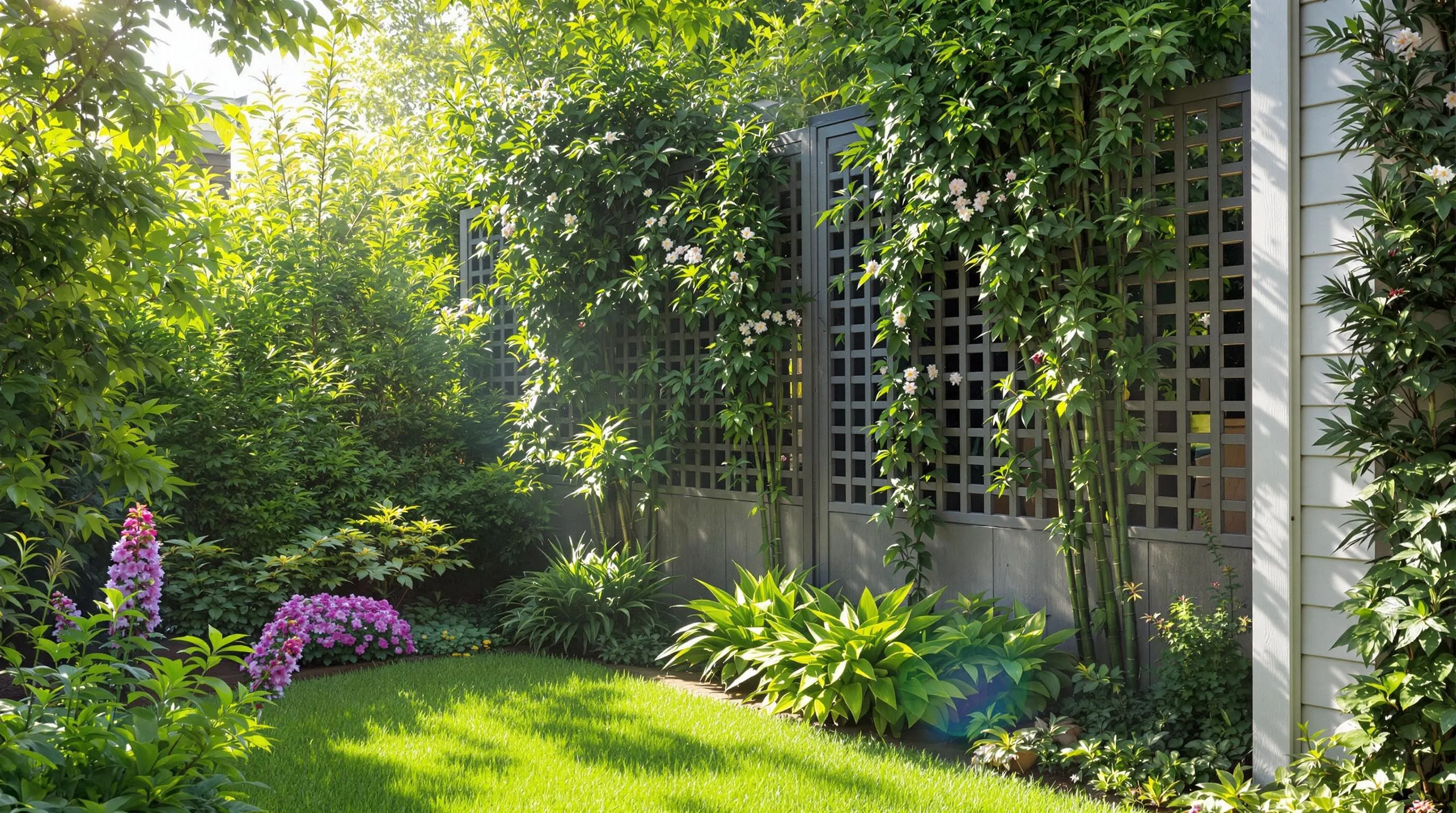
Transform your side yard into a secluded retreat by implementing strategic privacy screens. These natural barriers not only shield your property from prying eyes but also add aesthetic value and ecological benefits to often overlooked spaces.
Fast-Growing Privacy Plants for Side Yards
For quick privacy answers, consider arborvitae, which can grow up to 3 feet annually and create dense, evergreen screens reaching 10-15 feet tall. Bamboo offers rapid coverage, growing up to 5 feet per year, but choose clumping varieties like Fargesia to avoid invasive spreading. Privet hedges establish privacy within 2-3 seasons and respond well to regular trimming for a manicured look. For flowering options, try Leyland cypress, which combines quick growth (3-4 feet yearly) with soft, feathery foliage that creates an effective wind barrier. In narrow spaces, Italian cypress provides vertical interest with its columnar shape, reaching up to 40 feet tall while maintaining a slim 3-4 foot width. Layer different heights of these fast-growing specimens to create depth and visual interest while maximizing privacy protection.
Decorative Fence and Screen Ideas
Enhance your side yard’s privacy with decorative fencing options that combine functionality with style. Horizontal slatted fences offer a modern aesthetic while allowing filtered light to pass through, creating ever-changing shadow patterns throughout the day. For a natural look, consider woven willow or bamboo screens that weather beautifully over time and blend with landscaping. Incorporate climbing plants like jasmine or clematis on metal lattice panels for a living privacy screen that changes with the seasons. Gabion walls—wire cages filled with stones—provide excellent sound insulation along with visual privacy and can be topped with planters for additional greenery. For flexible answers, install decorative weatherproof outdoor curtains on tension cables, allowing you to adjust privacy levels as needed while adding soft texture to the hardscape elements in your side yard.
Adding Functionality with Side Yard Storage Solutions
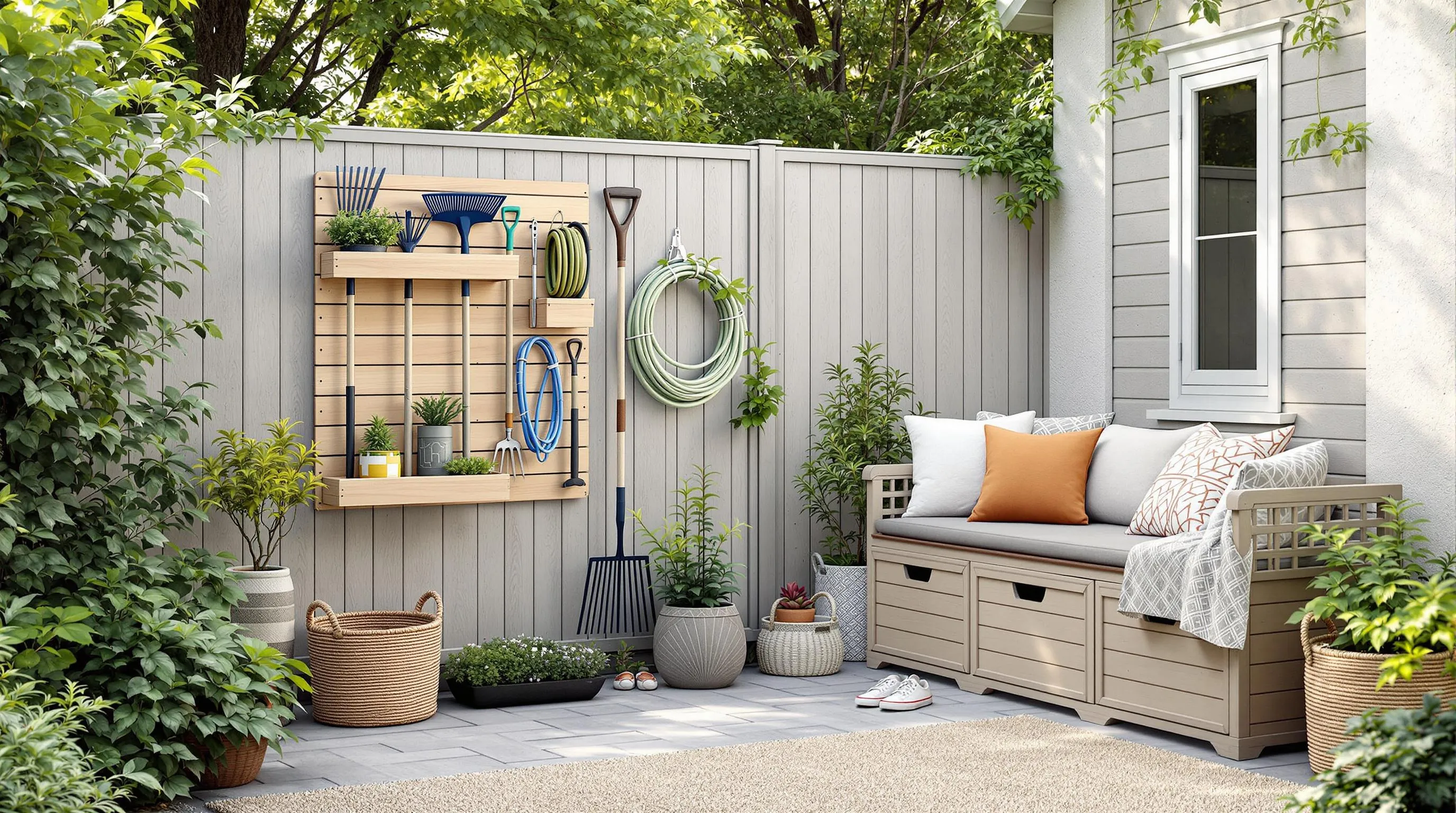
Transform your side yard into a practical space by incorporating smart storage answers that combine utility with aesthetic appeal. These options will help you maximize limited space while keeping your outdoor tools and equipment organized and accessible.
Attractive Garden Tool Organization
Make your side yard work harder by installing a vertical tool organizer on an exterior wall. Mount a wooden pallet painted in a complementary color to your home’s exterior and add hooks for hanging rakes, shovels, and garden hoses. For a more polished look, consider a custom-built tool shed with sliding barn doors that takes up minimal square footage while providing maximum storage capacity. Weather-resistant cabinets with adjustable shelving offer protection from the elements while keeping fertilizers, small tools, and gardening gloves neatly tucked away. You can also incorporate a pegboard system with clearly labeled sections to ensure everything has its designated spot, making garden maintenance more efficient and enjoyable.
Incorporating Storage Benches and Decorative Bins
Maximize functionality with multi-purpose storage answers that enhance your side yard’s appearance. Weather-resistant storage benches provide both seating and hidden compartments for storing outdoor cushions, children’s toys, or gardening supplies. Position these benches against your home’s exterior wall or fence line to create a cozy nook while utilizing otherwise dead space. Complement these with decorative bins made from natural materials like woven seagrass or bamboo for a touch of texture and organic appeal. For a cohesive look, choose containers that match your outdoor color scheme or existing garden features. Wheeled planter boxes with bottom storage drawers offer versatility, allowing you to cultivate greenery while concealing less attractive necessities like hose attachments, gardening gloves, or small tools.
Creating Side Yard Meditation Gardens
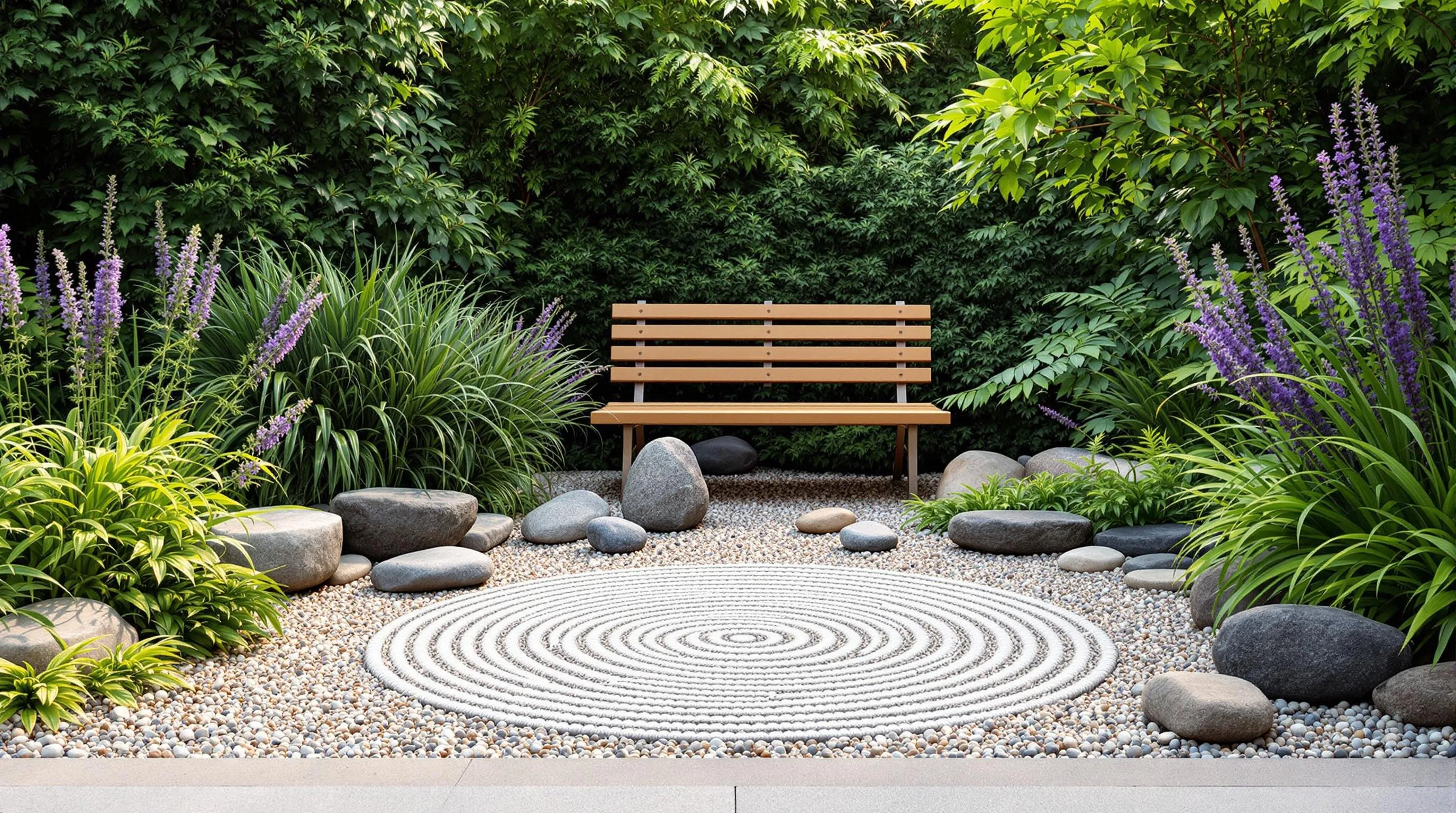
Transform your narrow side yard into a tranquil retreat where you can escape daily stress and reconnect with nature. A meditation garden in this often-overlooked space creates a perfect sanctuary that combines beauty with mindfulness.
Zen Elements for Peaceful Side Spaces
Incorporate authentic Zen elements to create a truly calming atmosphere in your side yard meditation garden. Start with a small gravel or sand bed that you can rake into patterns, mimicking traditional Japanese rock gardens. Add large, smooth stones or boulders strategically placed to represent islands or mountains. Water features like small bamboo fountains or bubbling stone basins introduce soothing sounds that mask neighborhood noise and enhance meditation sessions. Consider installing a simple wooden bench or flat sitting stone where you can comfortably practice mindfulness. Wooden pathways or stepping stones create intentional journeys through your meditation space, encouraging slow, deliberate movement. Enhance the ambiance with subtle wind chimes that produce gentle tones when activated by breeze, adding another sensory element to your peaceful retreat.
Low-Maintenance Plant Selection for Meditative Areas
Choose low-maintenance plants that require minimal attention yet provide year-round visual interest for your meditation garden. Ornamental grasses like Japanese forest grass or feather reed grass offer gentle movement and soothing sounds with every breeze. Incorporate evergreens such as dwarf Japanese cedar or compact boxwood for structure and consistency throughout seasons. Hostas and ferns thrive in shadier side yards and create lush, peaceful backdrops with minimal care requirements. Consider aromatic plants like lavender or rosemary that release calming scents when you brush against them during meditation practices. Moss varieties can create living carpets that require little maintenance while adding soft texture and vibrant green color. Plant these selections in simple, uncluttered arrangements that promote focus rather than visual distraction, using containers in neutral tones to maintain the serene aesthetic. With these thoughtful plant choices, your side yard meditation garden will remain beautiful and peaceful without demanding excessive time or attention.
Maximizing Small Side Yards with Container Gardens
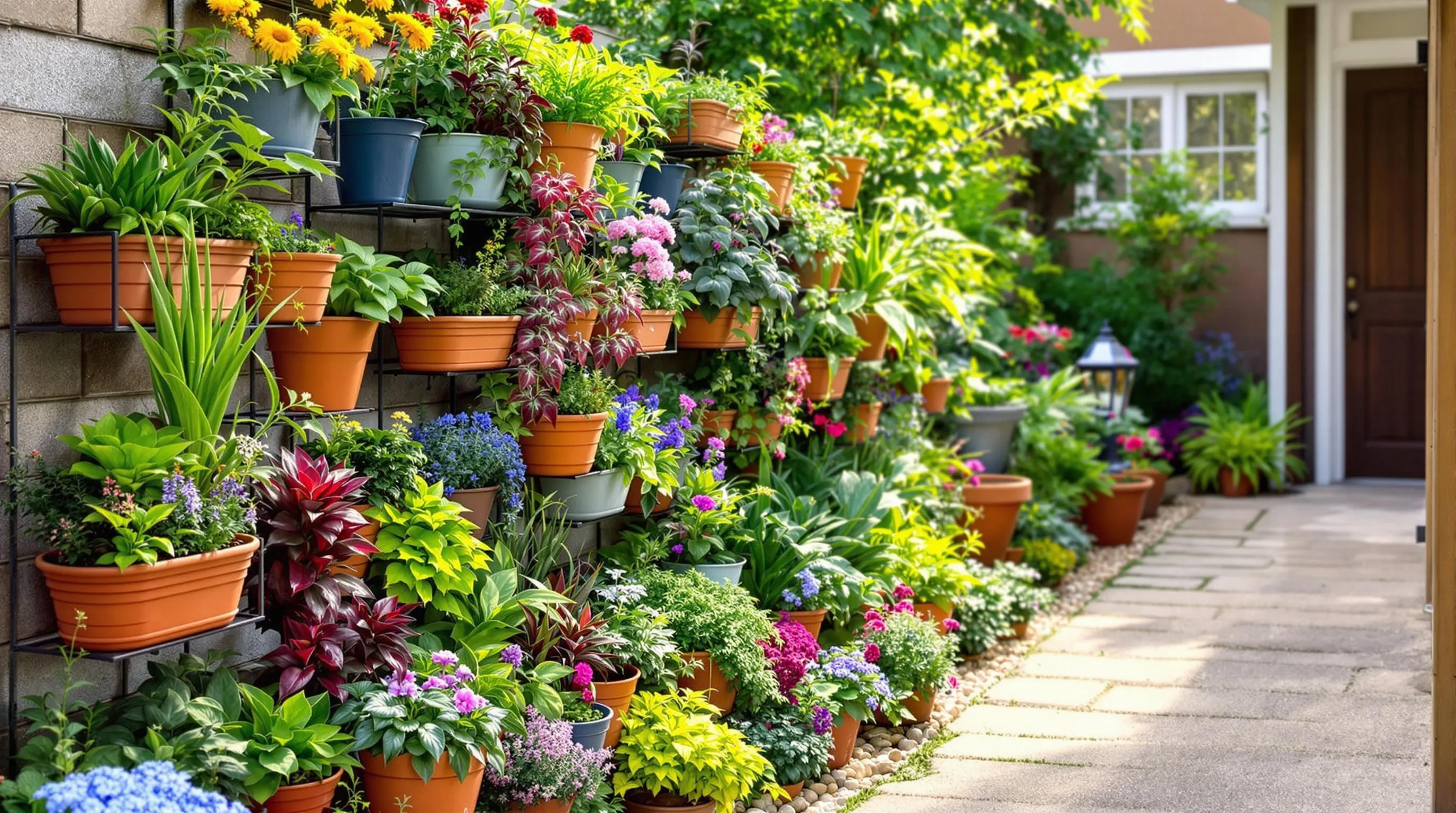
Container gardens offer the perfect solution for narrow side yards where ground space is limited. They bring color, texture, and life to otherwise overlooked areas while maintaining flexibility in your industry design. With containers, you can create stunning displays that change with the seasons without major renovations.
Stackable Container Systems
Stackable container systems maximize vertical space in tight side yards, allowing you to grow more plants in less square footage. Tiered planters create visual interest while accommodating different plant varieties at varying heights. Consider modular stacking answers like herb spirals, vertical pocket planters, or repurposed wooden crates mounted in a pyramid formation. Tower gardens with built-in irrigation systems work exceptionally well for growing vegetables in narrow spaces. For ultra-slim side yards, wall-mounted stacking planters attach directly to your house or fence, transforming bare vertical surfaces into lush growing spaces without consuming precious ground area.
Best Plants for Side Yard Container Gardens
Select plants based on your side yard’s exact light conditions for container garden success. For sunny side yards, drought-tolerant succulents, colorful calibrachoa, and compact vegetable varieties thrive in containers. Mediterranean herbs like rosemary, thyme, and lavender require minimal watering and provide fragrance along pathways. In shadier side areas, choose hostas, coral bells, and astilbes that flourish with less direct sunlight. Dwarf evergreens like compact junipers or small boxwoods offer year-round structure and require minimal maintenance. For seasonal color, mix in trailing plants such as sweet potato vine, creeping jenny, or bacopa to soften container edges and create ever-changing visual interest. Remember to group plants with similar water requirements together in the same containers to ensure consistent care and thriving displays.
Installing Side Yard Drainage Solutions with Style
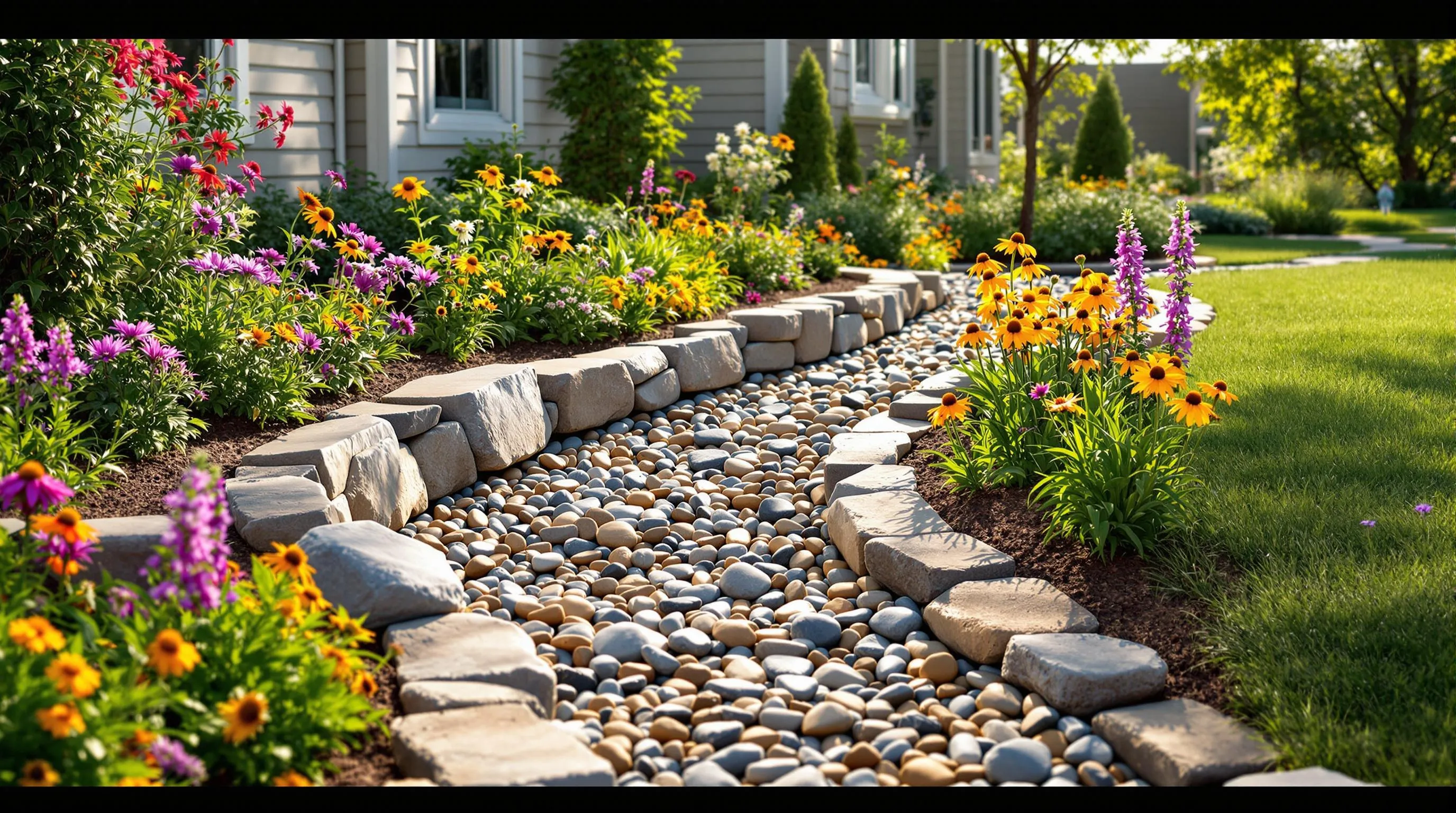
Proper drainage is essential for side yards, but functional doesn’t have to mean unsightly. Transform necessary water management into an attractive industry feature with these stylish drainage answers that protect your home’s foundation while improving your outdoor aesthetics.
Decorative Gravel Drainage Systems
Decorative gravel drainage systems combine practicality with visual appeal in your side yard. These systems feature attractive stone aggregates like river rock, pea gravel, or crushed granite that efficiently direct water away from your foundation while creating a refined industry element. Install a layer of industry fabric beneath the gravel to prevent weed growth and separate it from the soil. Add decorative edging with natural stone borders or metal edge restraints to contain the gravel and create clean lines. For enhanced drainage capacity, incorporate buried perforated pipes beneath the gravel that connect to a proper drainage outlet. This system works beautifully alongside pathways or as transition zones between different landscaping areas, offering year-round functionality regardless of weather conditions.
Rain Gardens for Side Yard Water Management
Rain gardens transform side yard drainage challenges into environmental assets that capture runoff and prevent erosion. Design your rain garden as a shallow depression planted with deep-rooted native species like coneflowers, black-eyed Susans, and switchgrass that thrive in both wet and dry conditions. Position your rain garden at least 10 feet from your home’s foundation where it can collect water from downspouts or natural low points. Layer the basin with permeable materials—a bottom layer of gravel, middle layer of sand, and top layer of amended soil—to help water absorption. Edge your rain garden with decorative stones or native grasses to create visual definition. Besides managing water effectively, your rain garden will attract beneficial pollinators and create a vibrant network in what was once just a drainage problem area.
Incorporating Edible Landscaping in Side Yards
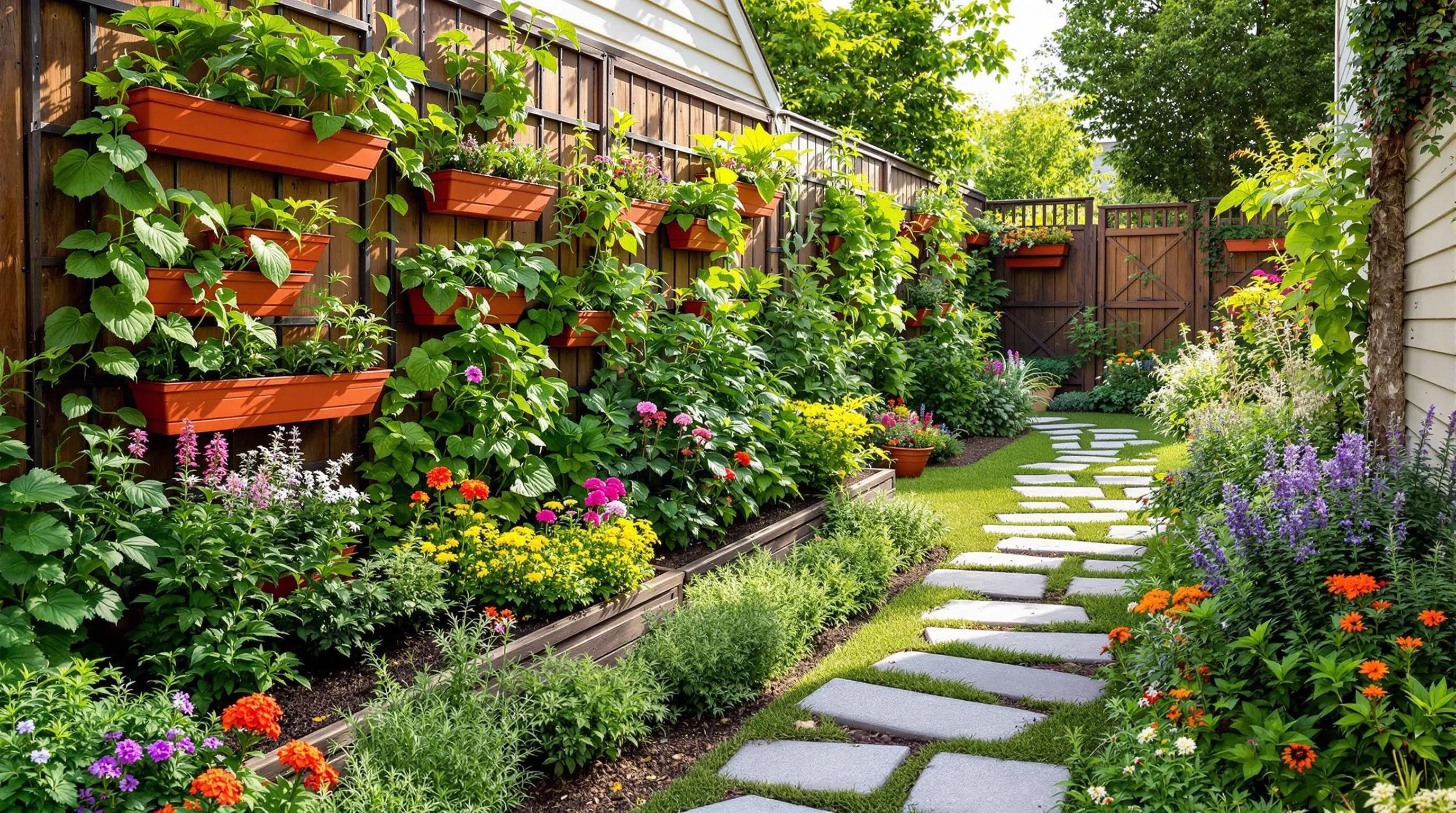
Transform your side yard into a productive space that combines beauty with functionality by incorporating edible landscaping. Side yards offer perfect opportunities to grow food while improving your home’s aesthetic appeal. With strategic planning, you can create a beautiful and bountiful industry that provides fresh produce right outside your door.
Vertical Vegetable Gardens for Limited Spaces
Maximize your side yard’s potential by growing upward with vertical vegetable gardens. Install wall-mounted planters, stackable growing systems, or repurposed pallets to create efficient growing spaces that take advantage of vertical real estate. Trellises work wonderfully for climbing vegetables like cucumbers, pole beans, and peas, allowing them to grow vertically rather than spreading across valuable ground space. Consider pocket planters filled with compact varieties of lettuce, spinach, and strawberries for continuous harvests throughout the growing season. For sunny side yards, cherry tomatoes and compact pepper varieties thrive in vertical systems with proper support. These space-saving answers not only provide fresh produce but also create living walls that add visual interest and texture to otherwise plain side yard spaces.
Herb Gardens Along Side Yard Pathways
Transform your side yard pathway into a fragrant, functional herb garden that engages the senses and provides fresh ingredients for your kitchen. Plant low-growing herbs like thyme, oregano, and creeping rosemary between stepping stones to release delightful aromas when walked upon. Create dedicated herb beds along the edges of your pathway using compact varieties like chives, parsley, and basil that can be easily harvested while passing through. Install raised planter boxes at different heights to add dimension and make harvesting more accessible. Choose herbs that match your side yard’s light conditions—lavender, sage, and marjoram for sunny spots; mint, cilantro, and parsley for partially shaded areas. This practical approach to side yard landscaping combines beauty with utility, transforming a simple passageway into a productive garden that enhances your outdoor experience and culinary adventures.
Lighting Your Side Yard for Safety and Ambiance
Your side yard holds untapped potential waiting to be discovered. From vertical gardens that maximize limited space to charming pathways that guide visitors through your property these often-overlooked areas can become your home’s hidden gem.
Whether you’re working with a narrow passage or a shadier spot consider how water features privacy screens and strategic lighting can transform the ordinary into extraordinary. Container gardens offer flexibility while proper drainage answers protect your investment.
Remember that beauty and functionality go hand-in-hand. Your side yard can serve as a meditation retreat storage solution or even produce fresh herbs and vegetables for your kitchen.
By implementing these landscaping ideas you’ll not only enhance your property’s curb appeal but create a space that truly reflects your lifestyle and brings joy for years to come.





